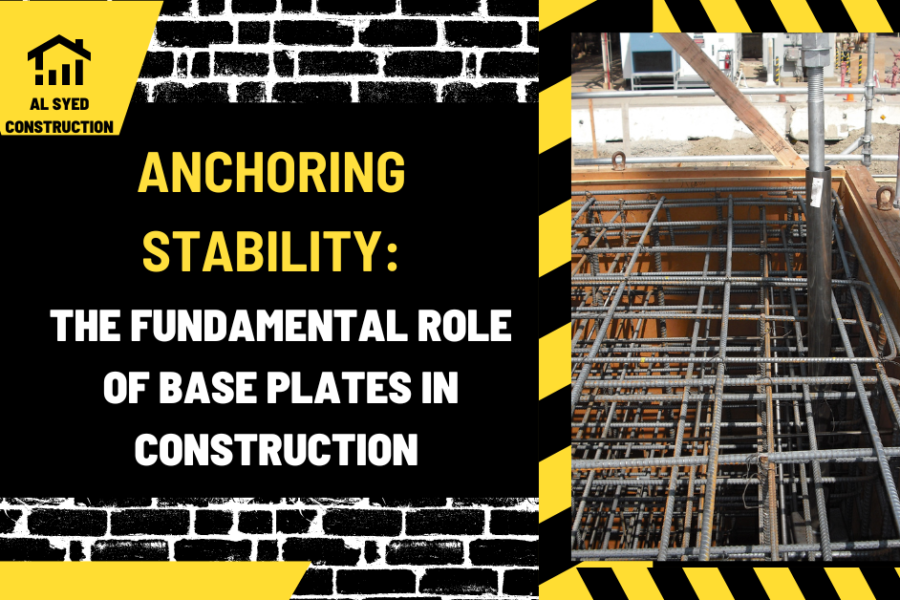Anchoring Stability: The Fundamental Role of Base Plates in Construction
In the construction industry, the base plate is a critical component that serves as the foundation for various structural elements. It is a flat, steel plate used to distribute the load from a column, post, or frame to the supporting concrete or foundation. This article delves into the definition of a base plate in construction, its functions, types, design considerations, and best practices for installation, providing a comprehensive overview of this essential structural element.
Understanding Base Plates in Construction
A base plate is a thick, rectangular steel plate used at the base of columns, posts, or other vertical structural members. It is typically bolted or welded to the column and anchored to the concrete foundation or footing. The primary purpose of a base plate is to distribute the load from the column over a larger area, reducing the pressure on the foundation and preventing structural failure.
Functions and Types of Base Plates
Base plates perform several important functions in construction:
Load Distribution: They spread the load from the column to the foundation, preventing excessive stress concentration.
Stabilization: Base plates provide stability to columns and prevent them from tipping or buckling.
Connection: They serve as a connecting element between the column and the foundation, ensuring a secure attachment.
There are various types of base plates used in construction, including:
Plain Base Plates: Simple, flat plates used for light loads and small columns.
Gusseted Base Plates: Plates with gussets (triangular steel plates) welded to provide additional support for larger loads.
Slotted Base Plates: Plates with slots to allow for adjustments in column placement or to accommodate thermal expansion.
Design Considerations for Base Plates
The design of base plates involves several considerations to ensure their effectiveness:
- Material: Base plates are typically made from structural steel, which provides strength and durability.
- Thickness: The thickness of the base plate is determined based on the load it needs to support and the size of the column.
- Anchorage: The anchoring system, including bolts and anchor rods, must be designed to securely hold the base plate and column in place.
- Load Distribution: The size of the base plate should be sufficient to distribute the load evenly to the foundation.
Best Practices for Installing Base Plates
Proper installation of base plates is crucial for their performance:
- Alignment: Ensure that the base plate is correctly aligned with the column and the foundation.
- Anchoring: Use appropriate anchors and bolts to securely fasten the base plate to the concrete foundation.
- Welding: If welding is required, it should be done by a certified welder to ensure strong and reliable connections.
- Inspection: Regularly inspect base plates for signs of corrosion, damage, or loosening of bolts.
Conclusion
Base plates are a vital component in construction, providing a stable and secure foundation for columns and other structural elements. Understanding the functions, types, design considerations, and installation practices of base plates is essential for construction professionals to ensure the safety and longevity of their projects. As construction techniques and materials evolve, the role of base plates in anchoring and stabilizing structures will continue to be of paramount importance.




